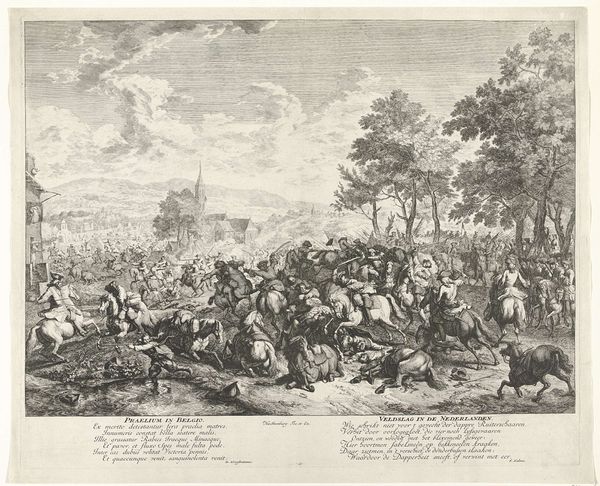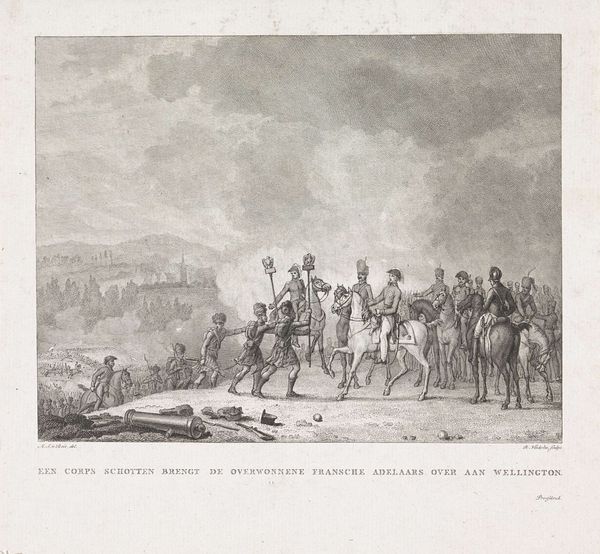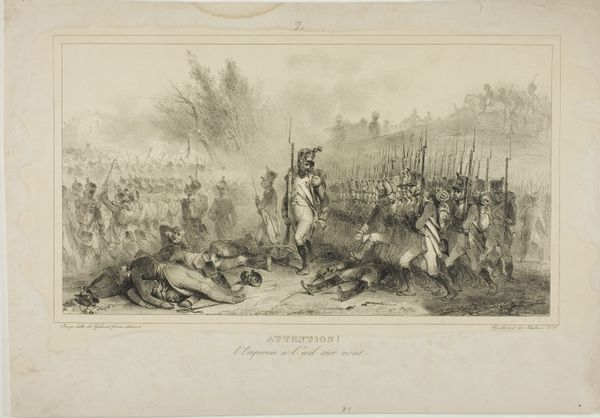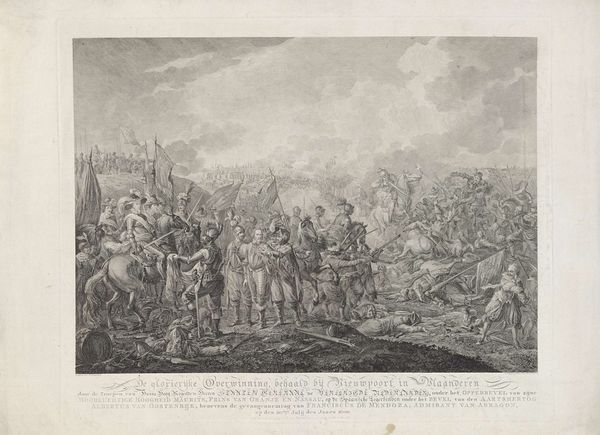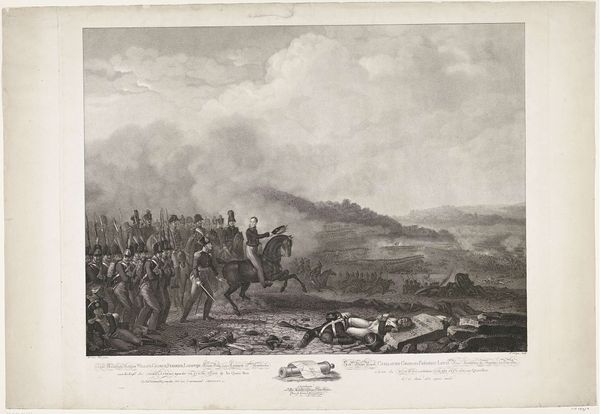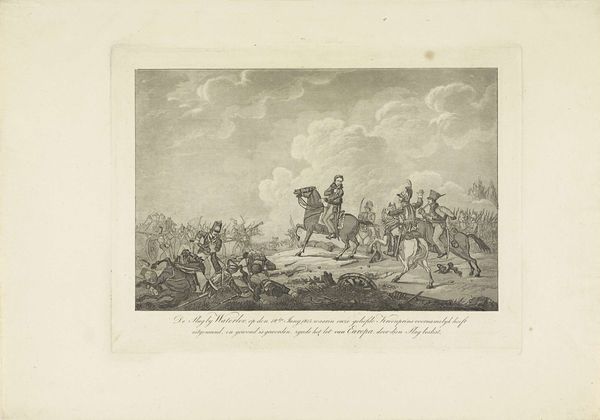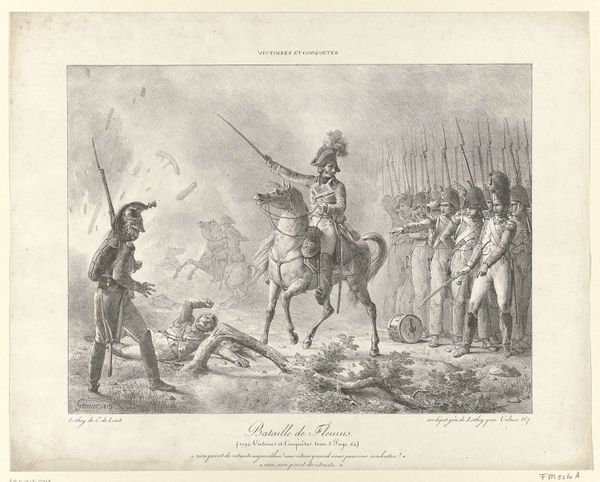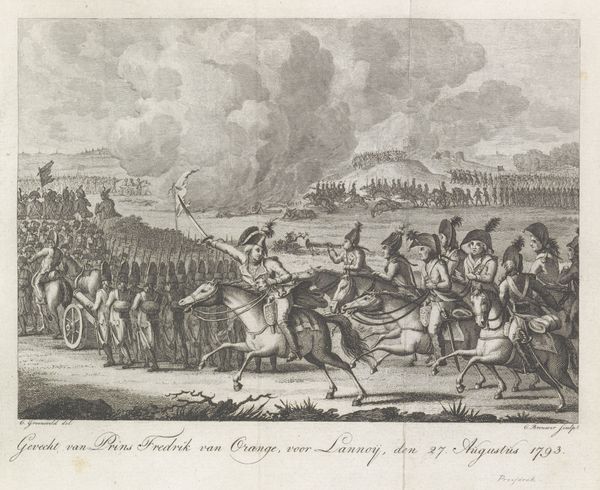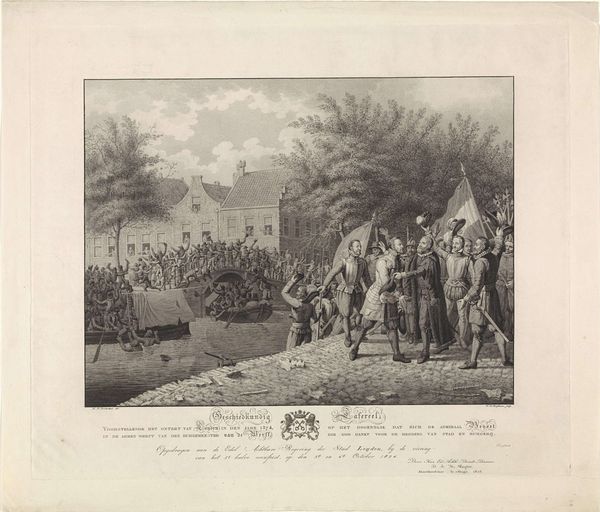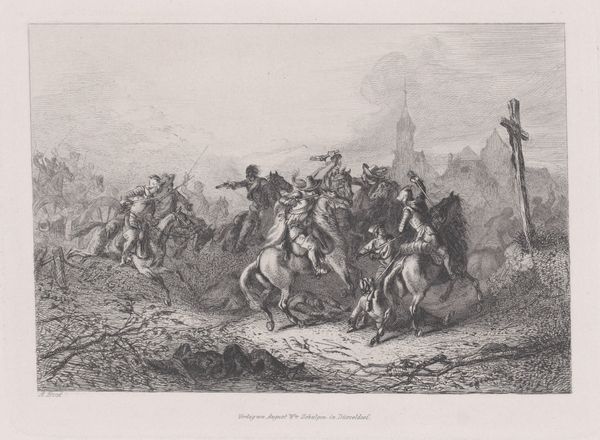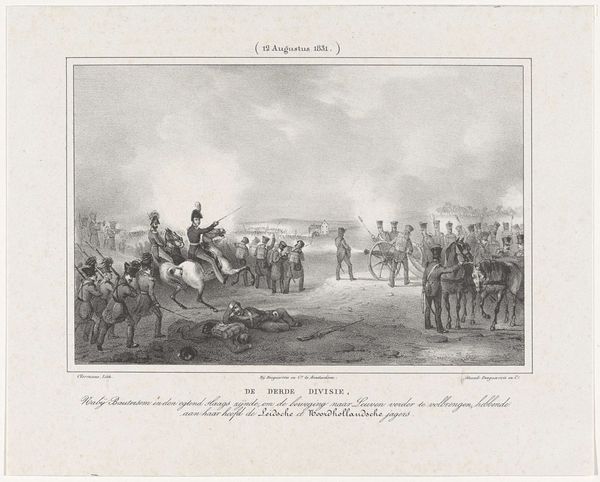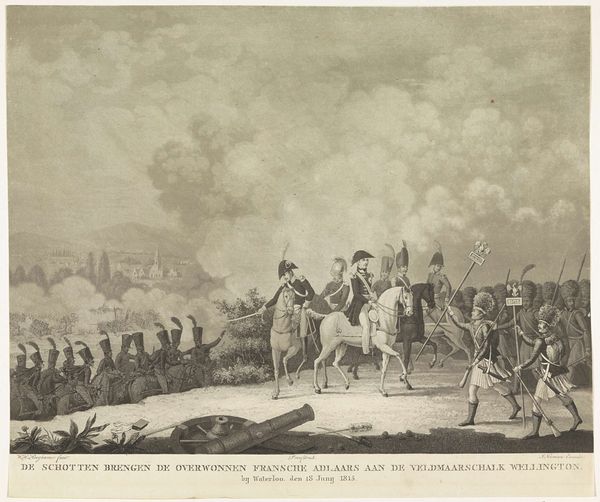
print, etching
#
narrative-art
# print
#
etching
#
landscape
#
etching
#
history-painting
#
academic-art
#
realism
Dimensions: height 426 mm, width 479 mm
Copyright: Rijks Museum: Open Domain
Willem Hendrik Hoogkamer created this print of the Battle of Leuven in 1831 using etching. It's a process that begins with a metal plate, typically copper or zinc. The artist covers the plate with a waxy, acid-resistant ground, then scratches an image into the ground with a needle. The plate is then submerged in acid, which bites into the exposed metal, creating lines. The longer the plate sits in the acid, the deeper and darker the lines will be. Ink is applied to the plate, filling the etched lines, and the surface is wiped clean. Finally, the plate is pressed onto paper, transferring the ink and creating the print. The linear quality of the etching lends itself well to the depiction of battle, all those individual strokes mimicking the dynamic action and detail of the scene, from soldiers to horses to puffs of smoke. It is an inherently reproducible medium, well-suited to conveying patriotic fervor to a wide audience at a critical moment in the history of the Netherlands. This kind of printmaking demonstrates that the aesthetics of craft and fine arts can merge to create something both beautiful and socially relevant.
Comments
No comments
Be the first to comment and join the conversation on the ultimate creative platform.
